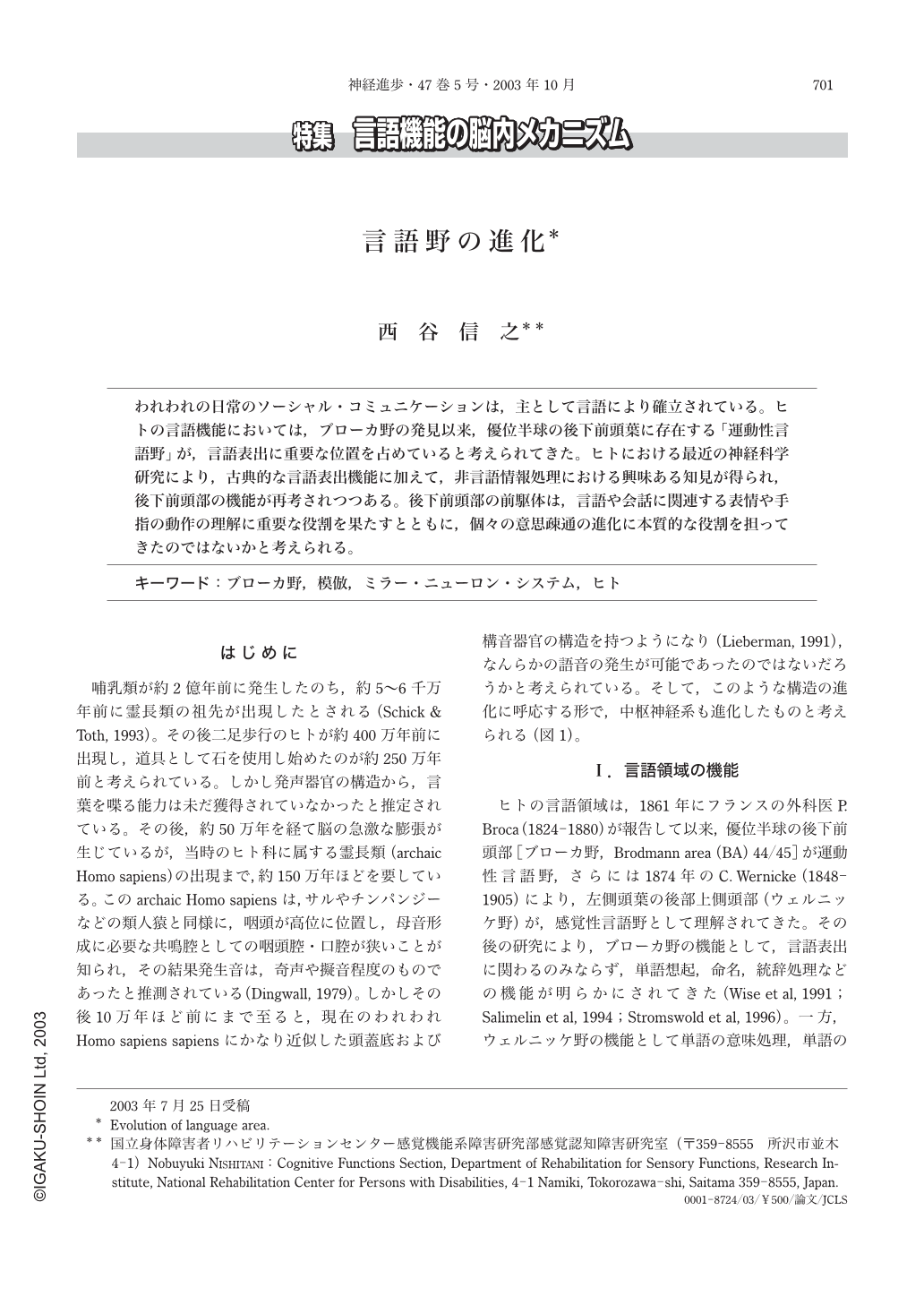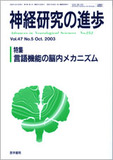Japanese
English
- 有料閲覧
- Abstract 文献概要
- 1ページ目 Look Inside
われわれの日常のソーシャル・コミュニケーションは,主として言語により確立されている。ヒトの言語機能においては,ブローカ野の発見以来,優位半球の後下前頭葉に存在する「運動性言語野」が,言語表出に重要な位置を占めていると考えられてきた。ヒトにおける最近の神経科学研究により,古典的な言語表出機能に加えて,非言語情報処理における興味ある知見が得られ,後下前頭部の機能が再考されつつある。後下前頭部の前駆体は,言語や会話に関連する表情や手指の動作の理解に重要な役割を果たすとともに,個々の意思疎通の進化に本質的な役割を担ってきたのではないかと考えられる。
はじめに
哺乳類が約2億年前に発生したのち,約5~6千万年前に霊長類の祖先が出現したとされる(Schick&Toth, 1993)。その後二足歩行のヒトが約400万年前に出現し,道具として石を使用し始めたのが約250万年前と考えられている。しかし発声器官の構造から,言葉を喋る能力は未だ獲得されていなかったと推定されている。その後,約50万年を経て脳の急激な膨張が生じているが,当時のヒト科に属する霊長類(archaic Homo sapiens)の出現まで,約150万年ほどを要している。このarchaic Homo sapiensは,サルやチンパンジーなどの類人猿と同様に,咽頭が高位に位置し,母音形成に必要な共鳴腔としての咽頭腔・口腔が狭いことが知られ,その結果発生音は,奇声や擬音程度のものであったと推測されている(Dingwall, 1979)。しかしその後10万年ほど前にまで至ると,現在のわれわれHomo sapiens sapiensにかなり近似した頭蓋底および構音器官の構造を持つようになり(Lieberman, 1991),なんらかの語音の発生が可能であったのではないだろうかと考えられている。そして,このような構造の進化に呼応する形で,中枢神経系も進化したものと考えられる(図1)。
We establish daily social-communication, mainly with language, in addition to non-verbal information such as facial expression and gesture. As for the language function of human, since Broca's area was discovered, “motor language field”located in the infero-posterior frontal area has been considered to play an important role in verbal expression. Recent neuroscience researches have shown the interesting knowledge in the non-verbal processing and the function of the infero-posterior frontal area has been reconsidered. It is suggested that the precursor of Broca's area has played a crucial role in understanding facial expression and hand gestures in relation to language and speech, and had an essential role in the human evolution of the inter-individual communication.

Copyright © 2003, Igaku-Shoin Ltd. All rights reserved.


